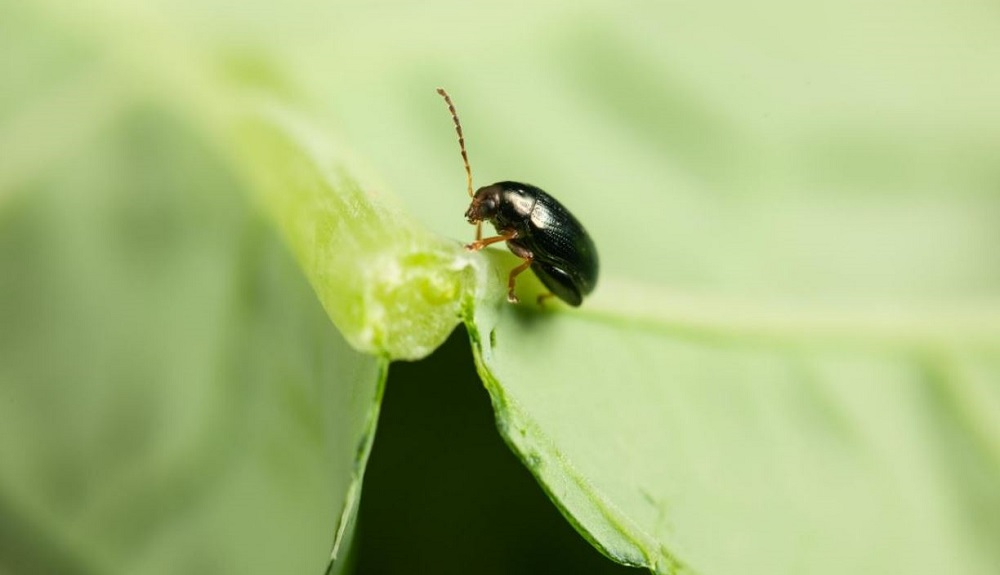- Home
- Knowledge library
- Varietal resistance to feeding (herbivory) by the cabbage stem flea beetle (CSFB) in oilseed rape
Varietal resistance to feeding (herbivory) by the cabbage stem flea beetle (CSFB) in oilseed rape
Summary
Downloads
21120219 Annual Project Report (2023-24) 21120219 Annual Project Report (2022-23) 21120219 Annual Project Report (2021-22)About this project
The challenge
Oilseed rape (OSR) is an important crop in many arable rotations. However, the area grown recently has been well below the record 0.76 million hectares planted in 2012. AHDB planting survey estimates for harvest 2021 put the area at just 0.32 million hectares – with the most notable area reduction in the Eastern and South East of England. These regions are associated with a higher prevalence of cabbage stem flea beetle (CSFB).
CSFB has become more challenging to control recently, primarily due to a reduction in effective chemical control options. Control increasingly requires the adoption of integrated pest management (IPM). However, despite the clear benefits of varietal resistance/tolerance to pests, no varieties are available for the control of any pest in OSR.
The project
Studies of the genetic basis of CSFB resistance have identified potentially useful variations in adult feeding damage in laboratory-based ‘choice experiments’, which were subsequently replicated in the field (2019).
Furthermore, a laboratory screen for resistance against CSFB larvae found substantial differences in the frequency of adult emergence between the 40 lines tested, with some lines producing few or no viable adults.
The results suggest some OSR varieties carry genes that:
- Deter adult CSFB feeding
- Confer resistance against larval infestation
These results show the potential to breed varieties with greater resilience to CSFB.
With a focus on collaborative research, this project will:
- Assist the identification and sharing of CSFB-resistant/tolerant germplasm (between breeders/researchers)
- Develop protocols and genetic markers for resistance/tolerance traits
- Facilitate the movement of key traits into market-ready varieties
The benefits
Near the start of the project, information on promising germplasm will be transferred to industry. This will encourage initial industry trialling and support rapid progression into the breeding pipeline (within the project lifetime).
Within the four years of the project, regions of the genome containing relevant variation will be mapped and markers linked to resistance traits identified. This will further support breeding efforts, through marker assisted selection (MAS) at the seedling stage – removing the need for relatively high-cost, insect-based assays.
Through the exploitation of modern breeding and selection techniques, it is theoretically possible to have adapted material for trialling within five years – with on-farm deployment shortly after. However, traditional commercialisation routes from research to market can be upwards of 15 years.
Looking beyond CSFB, this project could identify and promote changes in research and breeding strategies for resistance to other insect pests.
The partnership
*The majority of project funds has come from the BBSRC Industrial Partnership Award (IPA) scheme.
Alongside AHDB, a consortium of plant breeders – including DSV, KWS, Limagrain, Bayer, Elsoms Seeds, RAGT and LS Plant Breeding – have generated the required 10% IPA funding contribution. BASF also joined the project consortium in the 2022/23 project year.
Rothamsted Research is a research partner.
Also...
Flea beetle fight gets fresh funding injection (project launch news release – 12 August 2021)
At the 2024 Agronomy Conference, Rachel Wells (John Innes Centre) provided a fascinating insight into the genetic basis of resistance and tolerance to CSFB, the development of screens for such characteristics (for adults and larvae) and the identification of promising genotypes.


